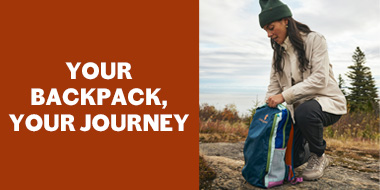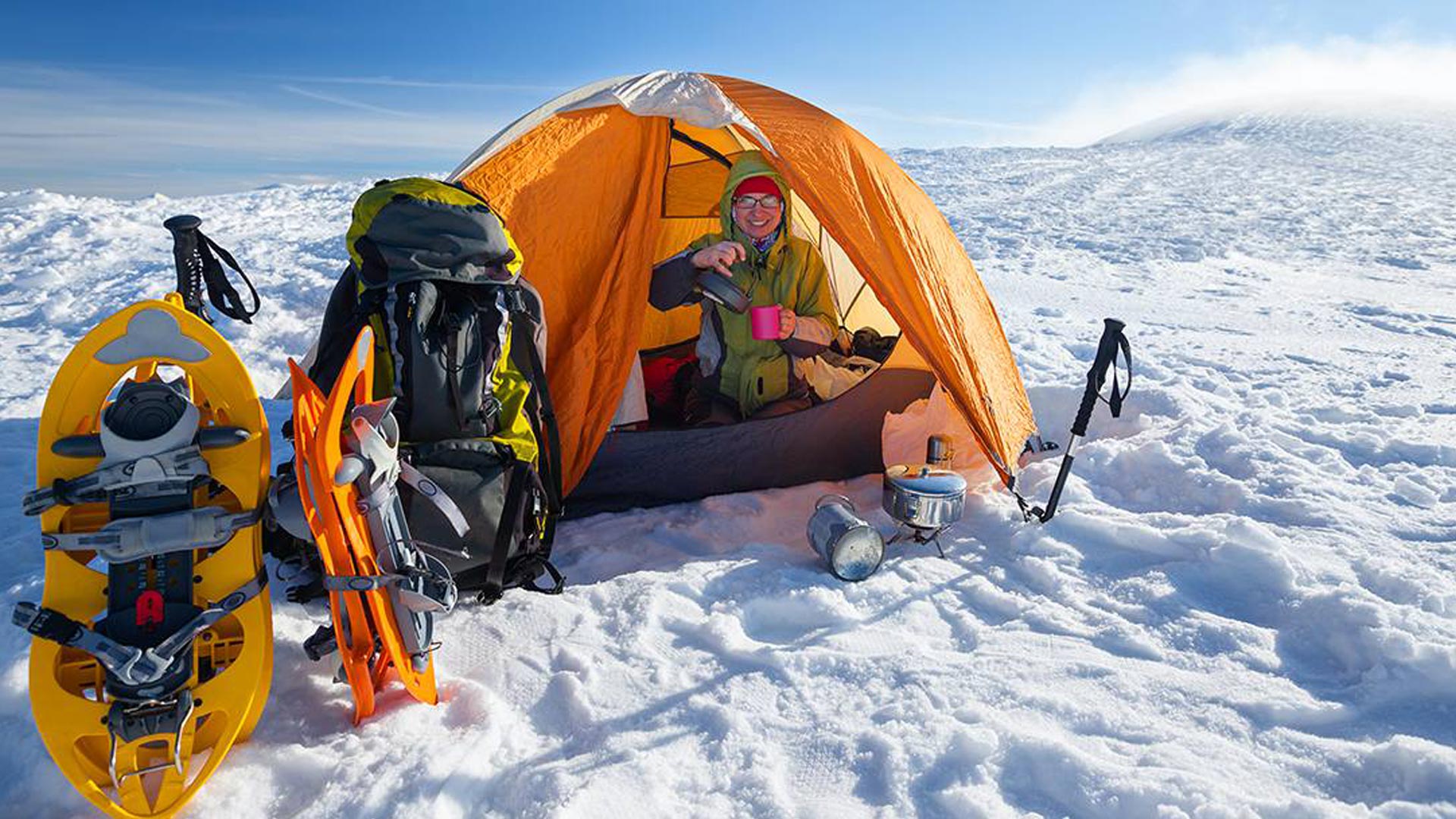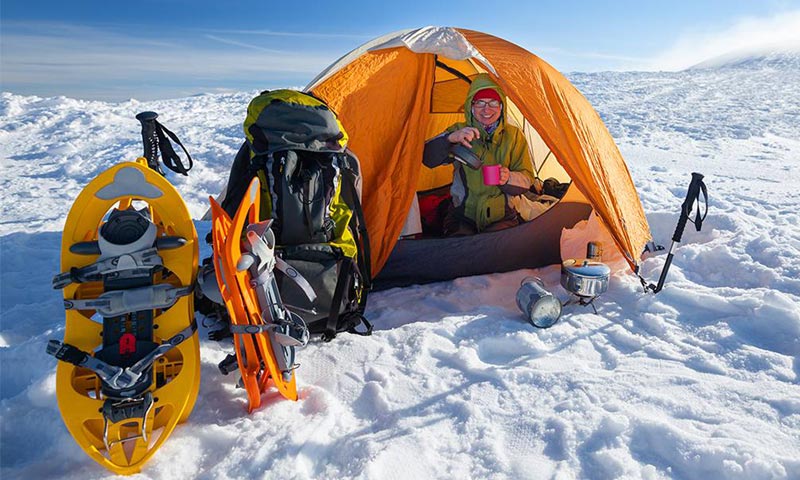If there were ever seasons during which multi-layering is appropriate for the great outdoors, it would have to be fall and winter. Given the great variations in temperature that can occur in a single day, and since we go through both active periods (getting to the campsite) and passive periods (resting in and outside the tent); dressing appropriately is more challenging than ever.
In fall and winter, a camper’s most important article of clothing remains, obviously, the outer shell. Ideally this is a waterproof-breathable garment that lets both heat and moisture escape while protecting from the rain to various degrees depending on whether it is a hard or soft shell, and on the quality of the top layer. If it is hot out, you can attach it to your backpack; when the temperature cools or it starts to rain, you can put it on.
Generally speaking, under the shell, one layer of clothing is usually enough in the fall. Even though synthetic fibre remains highly popular in manufacturing synthetic clothing, natural fibre such as merino wool is growing in popularity. When it is nice out, a merino wool vest can be worn as the main article of clothing, as this fibre is highly insulating. Very thin and very effective, it wicks away moisture caused by sweating, keeps you warm (even more so when it has a hood) and does not retain odours. You can therefore wear your merino wool vest every day for weeks without having to wash it.
In the winter, add a base layer (undergarments that absorb and wick away moisture to keep you dry) as well as an insulated garment, especially to protect against very cold temperatures, when leaving on an outing spanning several days or simply to ensure comfort at the campsite. Ideally, in this last case, you should get a compact model that you can store in your backpack.
For the lower body, softshell pants are more than sufficient in the fall and even on mild winter days. However, for long winter hikes or rainy areas, you should wear more rigid waterproof-breathable pants (with or without a base layer), especially in a more rugged environment (branches, sharp rocks, etc.) where there is a risk of ripping.
In the fall and winter, whether you are moving, resting or even in your sleeping bag, wearing a synthetic tuque helps minimize heat loss since heat escapes primarily from the head. You should also add a pair of gloves or mittens, depending on whether your priority is dexterity or warmth.
Although nothing beats hiking shoes to explore nature, more and more independent outdoor enthusiasts use their trail running shoes for shorter outings and when the terrain permits. However this type of shoe is not meant for stony or difficult trails, given their light weight and thinner, less resistant sole. Finally, winter boots should be chosen based on the type of activity you plan on practising (snowshoeing, Nordic skiing, etc.).
Often neglected or taken for granted, socks must nonetheless be given careful consideration. Several models present different blends of wool and synthetic fibre in order to provide a balance of warmth, comfort, resistance, moisture relief and drying speed. They are offered in a variety of thicknesses based on the level of comfort desired, sometimes with cushioned areas at the heels, toes or under the ball of the feet where there tends to be more wear.
If your boots have a waterproof-breathable membrane, choose a sock blend with less than 50% wool, since the moisture absorbed by the sock does not easily escape the membrane. If they are leather or generally more breathable, the wool portion of your sock can go up to 80%. As for 100% synthetic socks, they can tend to leave bad odours, so be sure to check for brands with an anti-bacterial agent.
In the fall, some hikers and campers swear by merino wool socks, whereas in the winter, most prefer wearing synthetic or hybrid socks for snowshoeing and cross country skiing, and wool socks at the campsite.
Some campers sleep with their hiking socks on, keeping their feet nice and warm before they put their boots back on the next day. However, by doing so, the opposite may occur as feet can sweat during the night. Finally, some hikers wear silk or synthetic fibre under-socks to better get rid of moisture while minimizing friction with the skin, two common causes for blisters.
In the winter, to prevent their feet from freezing at the campsite, some campers bring camping slippers. You can put these outdoor slippers on in the tent before getting into your sleeping bag, or use them to keep your toes warm on cooler fall evenings.
Because carrying equipment and pitching a tent can build up a sweat, always bring a change of clothes — dry and completely free of moisture — that you can to put on before slipping into your sleeping bag.
Finally, watch out for hot coals and sparks around the campfire: they can seriously damage your synthetic or merino wool clothing.















